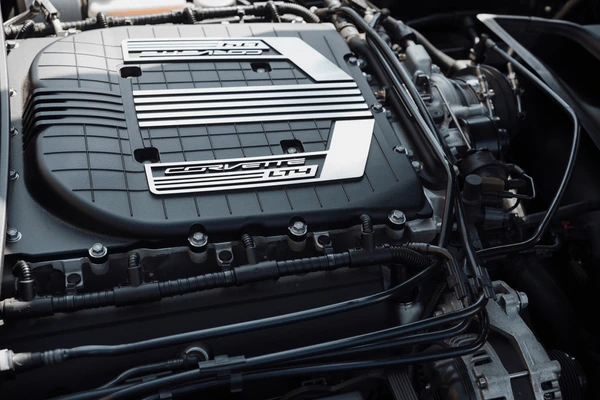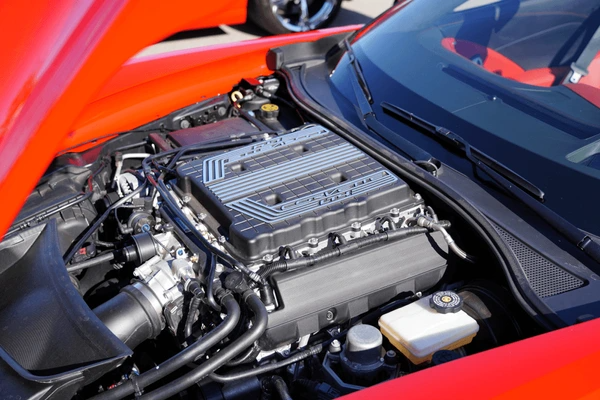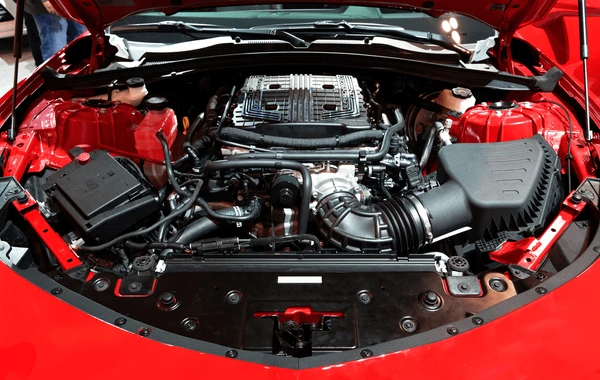
Introduction to the LT4 Engine
The LT4 engine is a powerful variant of General Motors’ renowned small block V8 engine family. Designed for ultra-high-performance vehicles, the LT4 delivers impressive power and torque, making it a standout choice for sports cars and performance enthusiasts. In this article, we will dive into the features, performance specifications, and benefits of the LT4 engine, helping you understand why it’s a top choice for high-performance driving.
Key Specifications of the LT4 Engine
Displacement, Bore, and Stroke
The LT4 has a displacement of 6.2 liters (376 cubic inches). While exact bore and stroke dimensions aren’t provided, similar engines typically feature a bore of around 4.0 inches and a stroke of approximately 3.6 inches.
Supercharging System
This engine features a 1.7-liter Eaton TVS supercharger that spins up to 20,000 rpm. It generates over 9 pounds of boost, significantly enhancing performance.

Power and Torque Output
It delivers 650 horsepower at 6,400 rpm and 650 pound-feet of torque at 3,600 rpm. Aftermarket modifications can push this power beyond 779 horsepower.
Engine Materials and Construction
The engine uses Rotocast A356T6 aluminum cylinder heads for better strength and heat dissipation. It also has forged connecting rods, forged aluminum pistons, and lightweight titanium intake valves to handle forced induction.
Valvetrain and Fuel System
With continuously variable valve timing and gasoline direct injection, this engine ensures efficient power delivery. The 10:1 compression ratio is optimized for the Eaton TVS supercharger.
Lubrication System
It can be configured with either wet sump or dry sump lubrication. The dry sump system, exclusive to high-performance models like the Corvette Z06, ensures consistent oil pressure under extreme conditions.
Performance Features of the LT4 Engine

Supercharging System
The engine comes with a 1.7L Eaton R1740 TVS supercharger, which can spin up to 20,000 rpm. This supercharger generates significant boost, boosting overall performance.
Compression Ratio
With a high 10.0:1 compression ratio, the engine is optimized for forced induction. This enhances combustion efficiency for better performance.
Power Output
In the 2022 Cadillac CT5-V Blackwing, this engine produces 668 horsepower and 659 lb-ft of torque. In the 2015-2019 Chevy Corvette Z06, it delivers 640 horsepower at 6,400 rpm and 630 lb-ft of torque at 3,600 rpm.
Materials and Construction
The engine uses a cast-aluminum block with six-bolt nodular iron main bearing caps. It also features a billet steel roller camshaft, forged steel crankshaft, forged powdered metal connecting rods, and hypereutectic aluminum pistons. These components are designed to withstand high-performance stresses.
Cooling and Air Management
A taller supercharger lid improves air intake and cooling performance. This design ensures better oxygen availability, which boosts combustion and increases power output.
Lubrication Options
The engine offers both wet and dry sump lubrication systems. This flexibility allows for optimization based on specific performance needs.
Exhaust System
Stainless-steel exhaust manifolds enhance exhaust gas flow, contributing to improved performance and efficiency.
LT4 Engine vs. LT1: What’s the Difference?
Performance and Specifications
The LT4 is a high-performance version of the LT1, delivering more power and torque. Designed for vehicles like the Chevrolet Camaro ZL1 and Cadillac CTS-V, it produces 640 horsepower at 6,400 rpm and 630 lb-ft of torque at 3,600 rpm. In comparison, the LT1 generates 460 horsepower at 5,900 rpm and 465 lb-ft of torque at 4,600 rpm.
Supercharging
Equipped with a 1.7-liter Eaton TVS supercharger, the LT4 provides significant boost for higher power output. The LT1, however, lacks this supercharging feature.
Valve Train
The LT4 utilizes 1.6 roller rockers, adding 0.30 more valve lift compared to the LT1. This improves both performance and efficiency.
Materials and Construction
Rotocast A356-T6 aluminum cylinder heads in the LT4 offer better heat dissipation and strength than the LT1’s cast-aluminum heads. Additionally, the engine includes forged powdered metal connecting rods, hypereutectic aluminum pistons, and a billet steel roller camshaft, all contributing to its durability and high performance.
Oiling System
The LT4 features a wet sump oiling system, whereas the LT1 offers both wet and dry sump options.
Applications
The LT4 powers high-performance GM vehicles like the Chevrolet Camaro ZL1, Cadillac CTS-V, and Cadillac CT5-V Blackwing. On the other hand, the LT1 is used in a wider range of GM vehicles, including the Chevrolet Corvette Stingray and Cadillac CT5.

The LT4 Engine in the Chevrolet Corvette Z06
- Specifications:
- Displacement: 6.2 liters (376 cu.in)
- Horsepower: 650 horsepower
- Torque: 650 lb-ft
- Supercharger: Eaton TVS (Turbocharger Vortices System) supercharger, which spins up to 20,000 rpm and generates over 9 pounds of boost
- Features:
- Continuously variable valve timing
- Cylinder deactivation
- Gasoline direct injection
- Wet sump or dry sump lubrication options (dry sump is reserved for the Corvette Z06)
- Applications:
- Chevrolet Corvette Z06
- Chevrolet Camaro ZL1
- Cadillac CTS-V
- Cadillac CT5-V Blackwing
Maintenance and Care for the LT4 Engine
Regular Oil Changes
For optimal performance, change the oil regularly to maintain proper lubrication and prevent premature engine wear. Use high-quality synthetic oil that meets the engine’s specifications.
Cooling System Checks
Due to its high-performance nature, the engine produces substantial heat. Regularly inspect the cooling system, including the radiator, coolant, and water pump, to avoid overheating and potential engine damage.
Air Filter and Intake System Maintenance
Ensure the air filter stays clean and the intake system is free of debris. A well-maintained intake system improves airflow and engine efficiency.
Exhaust System Inspection
Check the exhaust system for leaks and proper fitment. Consider performance upgrades, like exhaust wraps, to enhance engine efficiency and improve sound.
Spark Plug and Ignition System Care
Regularly inspect and replace spark plugs and other ignition system components. This ensures optimal combustion and keeps performance at its peak.
Brake System Maintenance
While not directly related to the engine, high-performance engines often come with powerful brakes. Regularly check brake pads, rotors, and fluid to maintain safety and performance.
Tune-ups and Performance Enhancements
Periodically tune up the engine to maintain its high performance. Upgrades like ECU tuning and intake modifications can further boost power and efficiency.
To get detailed scientific explanations of LT4 Engine, try Patsnap Eureka.

